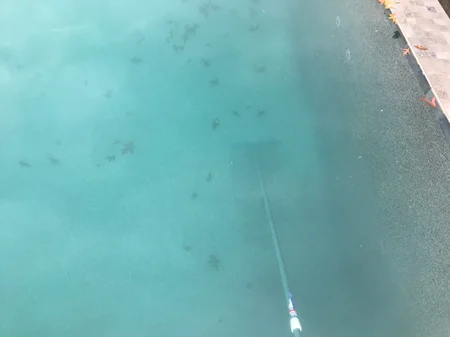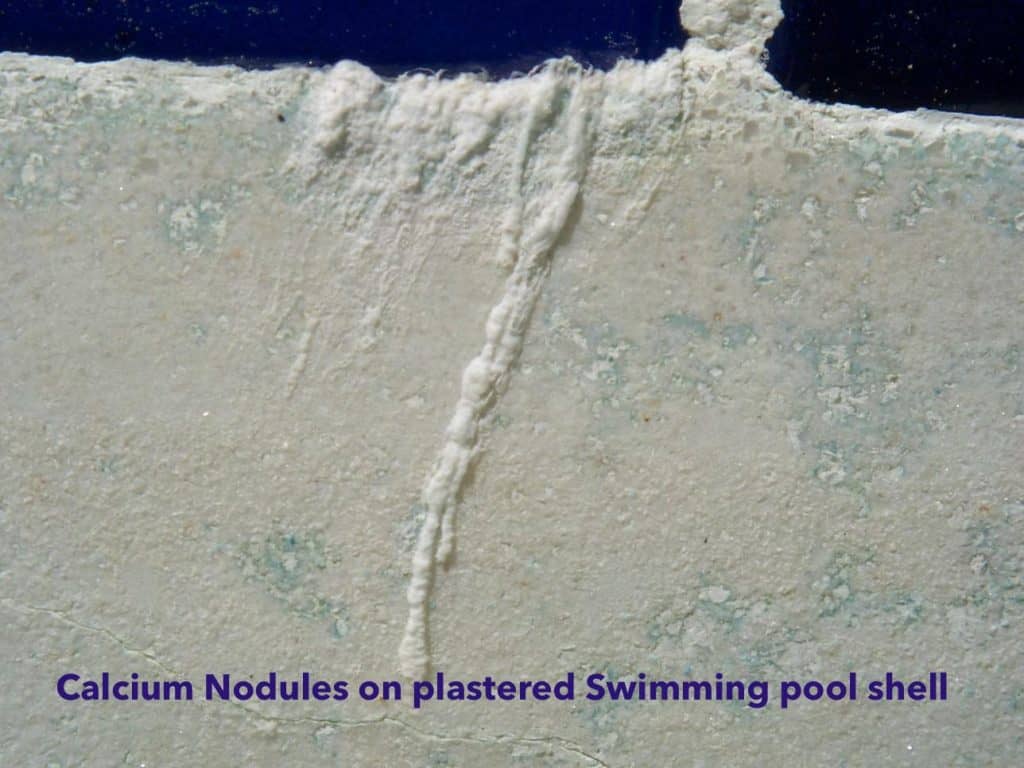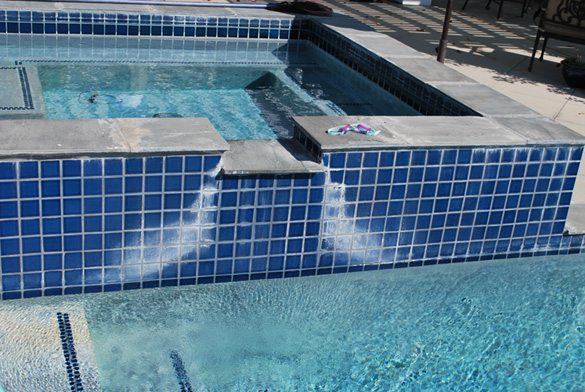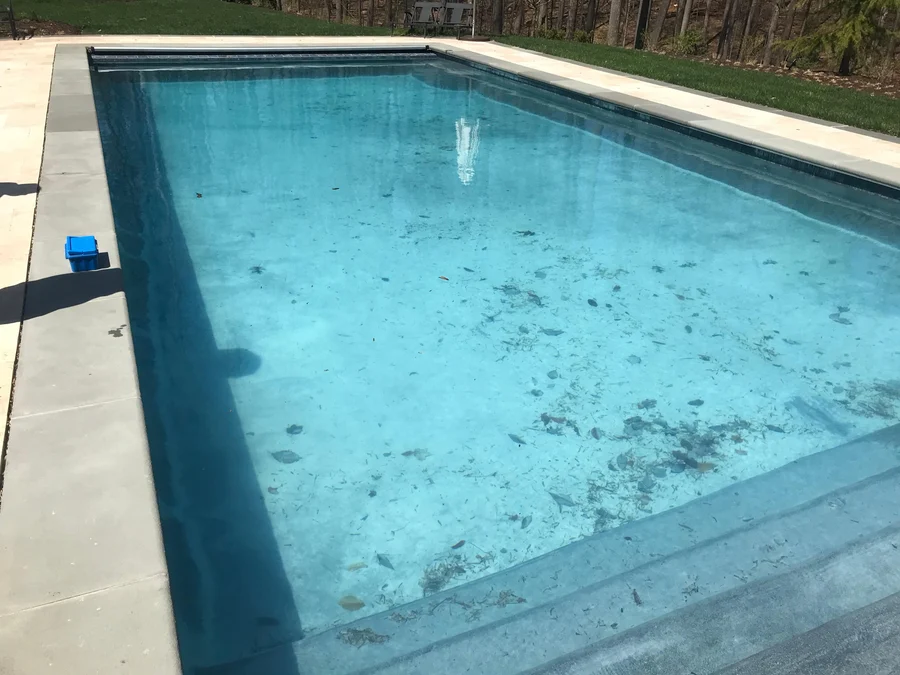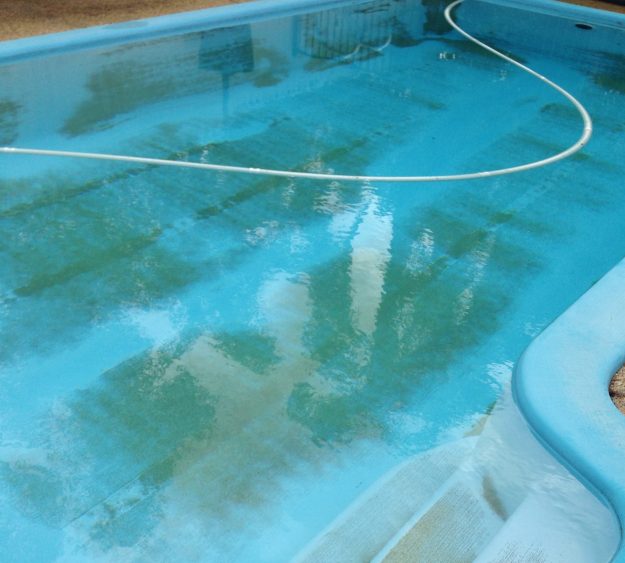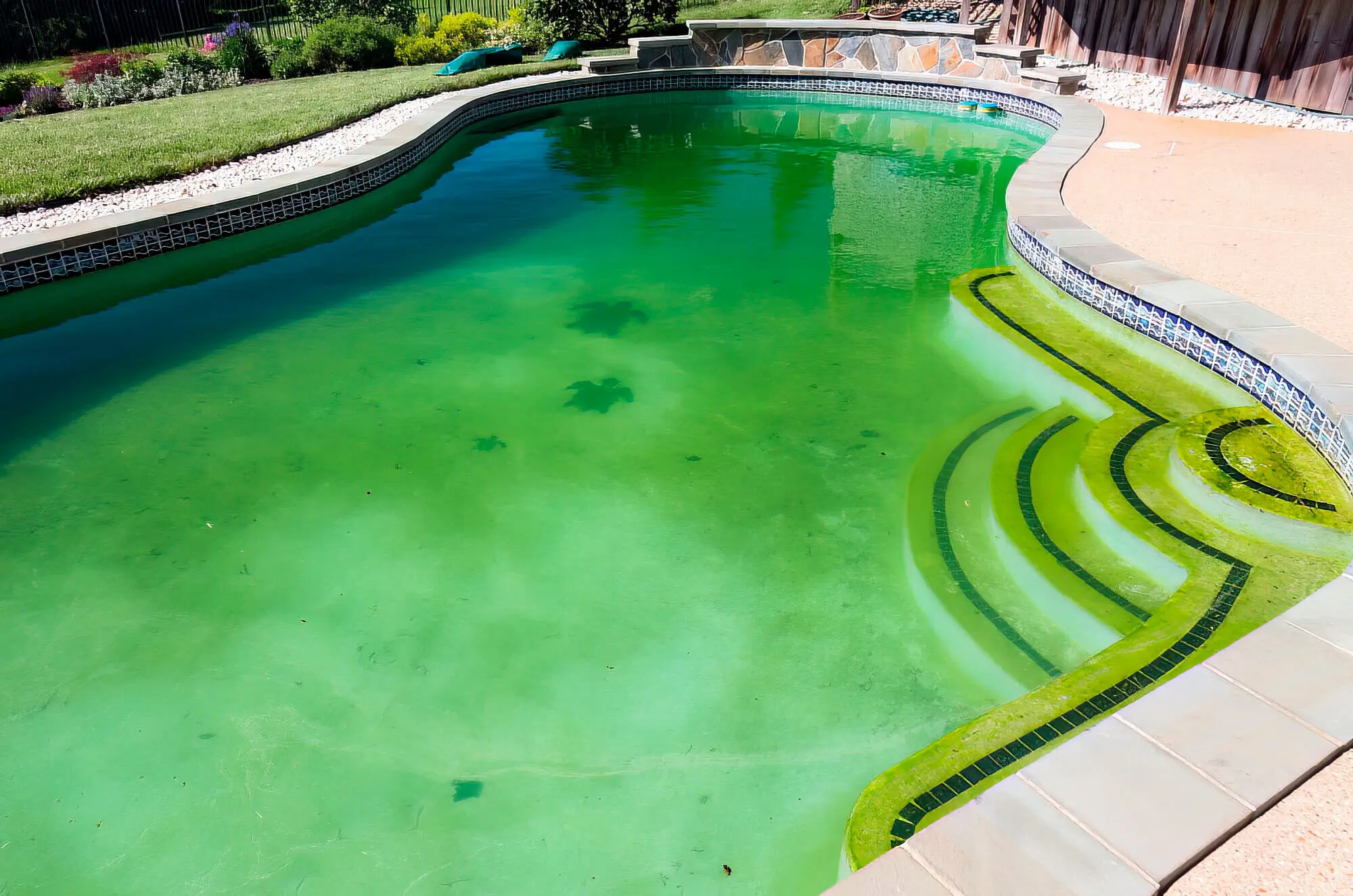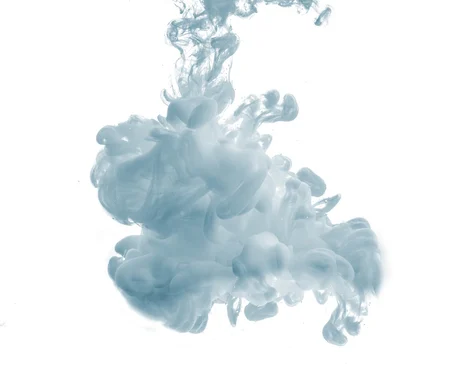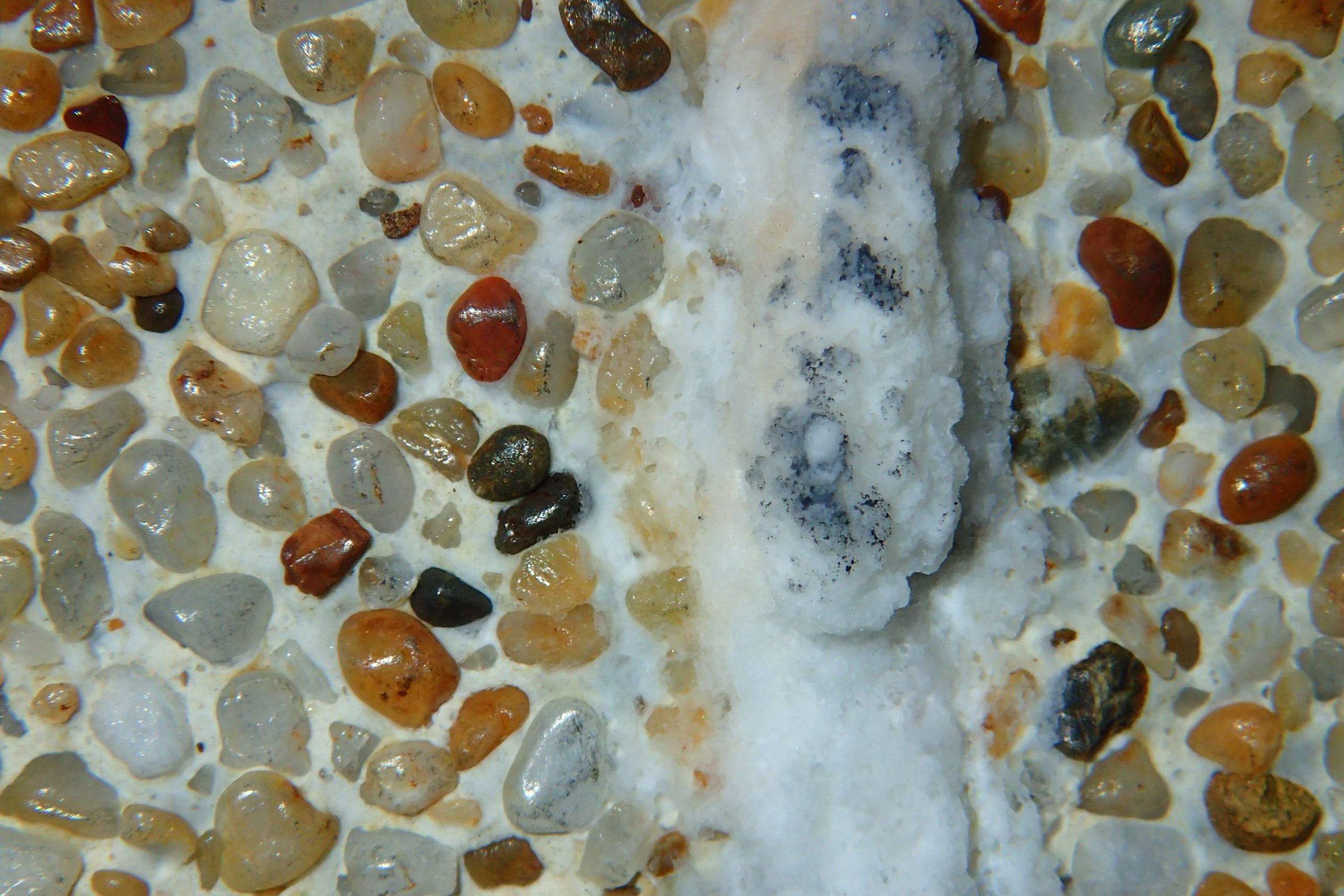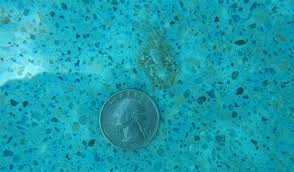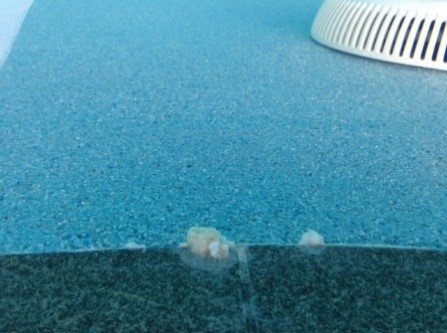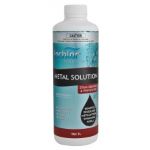Scaling
Addressing the scaling of pool surfaces is a multifaceted issue, with successful treatments ranging from complete removal to partial clearance. Service personnel should ascertain the customer's expectations, whether it's restoring the surface to a like-new condition or simply improving its current state. Prior to providing a quote and commencing treatment, it is crucial to inform customers that a single treatment may not fulfill their expectations. Upholding the reputation of Billabong Pool Service takes precedence over any individual job. Therefore, thorough consideration and consultation are essential, as is presenting alternative solutions to the customer, such as re-surfacing. It is important to note that Billabong does not provide pool draining or acid washing services.
SCALING
Calcium scaling in swimming pools can be a challenging problem; however, comprehending its causes and learning how to tackle it are crucial for maintaining pools and preventing surface staining. Let's explore the details:
Types of calcium scaling:
Calcium carbonate is a common type of scaling that forms white deposits on pool surfaces, including walls, railings, and ladders. Although challenging, it is manageable.
Calcium silicate scaling forms more slowly and is extremely difficult to remove. Suspected calcium silicate buildup may also indicate pipe buildup.
Calcium nodules are small, hard deposits that appear on the pool surface as tiny white or grey bumps.
To distinguish between these types, place a drop of muriatic acid on the scale. If there is a reaction with foaming, it is calcium carbonate; if there is no reaction, it is likely calcium silicate.
Factors Contributing to Calcium Scaling:
High Calcium Levels:
Scaling can occur when water has calcium levels exceeding 400 ppm (parts per million), which is common in areas with hard water.
Water Chemistry: An environment conducive to scaling is created by high alkalinity and pH levels.
Water Temperature: Scaling is intensified by higher water temperatures.
Causes of Calcium Silicate Scaling:
Calcium silicate scaling in swimming pools results from several factors:
When the pool surface is installed, the scaling may relate to the silicate amount in the mix, neglecting water chemistry protocols, and not brushing the surface for the first month after filling with water.
High calcium levels can stem from hard water or using calcium hypochlorite shock, which increases the water's calcium content.
High alkalinity and pH levels provide an ideal environment for calcium scaling.
Elevated water temperatures can also lead to calcium scaling.
Causes of Calcium Nodules:
Calcium nodules are small, hard deposits that appear on pool surfaces, often as tiny white or grey bumps.
These are generally caused by an overabundance of calcium carbonate in the pool water, leading to accumulation and hardening on different surfaces.
Here are the factors contributing to calcium buildup in pool interiors:

Calcium Carbonate Scale
Calcium Carbonate. This type of scaling is relatively easier to remove. It occurs when calcium hardness levels in the pool water are high

Calcium Silicate Scale
Calcium Silicate: This type forms more slowly but is extremely challenging to remove.
Calcium Scaling:
Billabong Pool Service employs various treatments to tackle the challenging issue of calcium carbonate scaling. Before proceeding with any treatment, the service technician must assess several factors:
- The severity of the scaling and the duration it has been left untreated.
- The nature of the scaling and the surrounding pool environment.
- The sanitation and filtration systems in use.
- The existing water chemistry.
Calcium Carbonate Scaling
here are some examples of scaling
The common approach is to use chemical treatments to dissolve calcium carbonate deposits, but one or all of the following treatments may need to be used to address this issue:.
- Consider adding a chemical sequestrant to the pool water. This helps prevent the formation of new deposits and may even reduce existing ones.
Lower Calcium Hardness: Partially drain and refill the pool water to reduce calcium hardness.
Manual Removal: Scrub the scaling using a pumice stone or a stain eraser tool.
Chemical Treatment:
- Establish the water chemistry and, if possible, the water chemistry history of the pool.
- The parameters to consider are pH and T.A. (total alkalinity), as they are the most important in proceeding with a treatment.
- Aim for a pH target of 7.0 and total alkalinity (T.A.) below 100 ppm but not less than 60 ppm. If the severity of scaling warrants it, consider an acid bath with the existing water at a rate of 10 liters of undiluted acid per 50,000 liters. Note that this will significantly lower both pH and T.A. levels and should be used only briefly, from 24 to a maximum of 48 hours, to soften the deposits. Afterward, strive to achieve less aggressive pH and T.A. levels.
- The calcium hardness level should be established to provide a base point, recorded, and referenced after treatment has been performed.
- To soften the scaling, products like Lo-Chlor Stain and Scale Attack Parts 1 & 2 have proved effective in softening and subsequently removing light to moderate scale.
- Heavy scaling may require multiple treatments and more aggressively low pH levels for prolonged periods of time—weeks, possibly months.
- Manual Removal: Scrub the scaling using a pumice stone, stain eraser sticks, or metal algae brush to help loosen the softened scale.
- Testing of calcium hardness needs to be performed at this stage to establish that the calcium level has increased from the baseline established before the treatment started.This will indicate the removal of calcium from the surface and the success or failure of the treatment.
- A sequestering agent like Lo-Chlor Stain & Scale Defense, Lo-Chlor Aquaguard, or Riversands CalStop is used to retain the removed calcium in solution.
- Filtration should be addressed at this time, and a regular filer-clean schedule of every 2 days should be in place at least a week after treatment.
- If a cartridge filter is being used, the condition and effectiveness of the filter need to be assessed, and a replacement may need to be considered.
- If a sand filter is in use, you should consider using Lo-Chlor Filter Aid & Metal Remover.Partially draining and refilling the pool water to reduce calcium hardness may be required at extreme levels of calcium hardness.
- Re-balance the pool, continue to monitor calcium hardness levels, and continue removal protocols until it reaches between 180 ppm and 250 ppm.
* Use a pumice stone or a tile brush to gently remove the scaling from pool walls, tiles, and other surfaces.
Be cautious not to damage the pool finish while scrubbing.

Calcium Silicate Scaling
Calcium silicate forms much more slowly than calcium carbonate, another type of scaling. Once it’s there, it’s nearly impossible to remove, as the crystalline matrix is much tighter and harder than calcium carbonate and may not even react to direct, undiluted acid application.
Even worse, if you have calcium silicate, there is a very good chance that you also have buildup in your pipes.
For a calcium silicate buildup. The most obvious option for this type of scaling is for the customer to cut their losses and resurface the pool.
If the customer is not in a position to re-surface the pool or would like other options,. The following control-only measures may be offered:
It’s important not to let calcium silicate build up or continue to build up for too long, as it will eventually damage your pipes and your filter.
You could use the same chemical and the same treatment approach as for calcium carbonate scaling; don't expect full or even partial eradication. What it may do is remove some surface scaling recently plated down
Consider adding a chemical sequestrant agent like Lo-Chlor Stain & Scale Defense, Lo-Chlor Aquaguard, or Riversands CalStop to retain the removed calcium in solution. This helps prevent the formation of new deposits and may even reduce existing ones.
Consider reducing pH and T.A. parameters closer to a fibreglass pool pH to 7.0 T.A. to a maximum of 80 ppm permenatly.
Reverse osmosis treatment can also be beneficial in preventing calcium buildup on pool surfaces.
Reverse osmosis is a process that removes impurities from water by passing it through a semipermeable membrane.
Regularly using reverse osmosis treatment can help remove excess calcium from the pool water, preventing buildup on pool surfaces.

Calcium Nodules
You may find the following links helpful in explaining nodules:
Calcium Nodules on swimming pool plaster Pt 1
Calcium Nodules on swimming pool plaster Pt 2
Calcium nodules in swimming pools are small, unsightly bumps composed of calcium carbonate that can form on plaster, fibreglass, or tile pool linings. They typically result from a poor plastering job or normal ageing in older plaster pools. When air bubbles become trapped in dried plaster, it leads to the delamination of the pool lining, allowing elements of it to become exposed to the pool water. Loose or Drummy Surface: If the pool surface becomes loose or develops voids, water can seep behind the pebbles or other materials. Calcium hydroxide may then bleed into the water, leading to the creation of calcium carbonate nodules along the surface. Calcium hydroxide in the pool lining may combine with alkaline elements in the water, forming calcium nodules
To remove calcium nodules, you can scrape them off with a stiff trowel, but this is only a temporary fix as they will likely reform. The only true solution is to repair or replace the pool’s lining. Formation of Calcium Nodules in Pool Water: When the pool water has an elevated pH level, it can contribute to the formation of calcium nodules. Maintaining the correct pH balance is crucial to preventing this issue.
Very High Calcium Hardness: Proper calcium hardness levels are essential for protecting the pool surface from calcium-related problems. For pebble, quartz, and glass bead pools, the suggested calcium hardness level is 200–250 ppm. Fiberglass pools vary by manufacturer, but most recommend a minimum of 150 ppm. side of the surface: Sometimes, calcium nodules form within the pool surface itself. These stubborn calcium deposits often appear as hard white scales on the pool surface.
To prevent calcium buildup, focus on maintaining the right pH and alkalinity and ensuring proper water balance. While some treatments temporarily reduce the effects of high calcium, they don’t permanently remove calcium buildup. Keeping the water chemistry balanced is key to avoiding calcium-related issues in swimming pools.
Chemical Treatment:
- Establish the water chemistry and, if possible, the water chemistry history of the pool.
- The parameters to consider are pH and T.A. (total alkalinity), as they are the most important in proceeding with a treatment.
- A target of pH 7.0 and a T.A. under 100 ppm but no less than 60 ppm. Consider an acid bath with water in place at this stage if you feel the severity of the scaling justifies it, at a rate of 10 liters of undiluted acid per 50,000 liters (be aware that this will drastically reduce both pH and T.A. and should only be used for a short period of time, 24 hours to a maximum of 48 hours, only to soften the deposits, and after that period a less aggressive pH and T.A. level should be obtained).
- The calcium hardness level should be established to provide a base point, recorded, and referenced after treatment has been performed.
- To soften the scaling, products like Lo-Chlor Stain and Scale Attack Parts 1 & 2 have proved effective in softening and subsequently removing light to moderate scale.
- Heavy scaling may require multiple treatments and more aggressively low pH levels for prolonged periods of time—weeks, possibly months.
- Manual Removal: Scrub the scaling using a pumice stone, stain eraser sticks, or metal algae brush to help loosen the softened scale.
- Testing of calcium hardness needs to be performed at this stage to establish if the calcium level has increased from the baseline established before the treatment started.This will indicate the removal of calcium from the surface and the success or failure of the treatment.
- A sequestering agent like Lo-Chlor Stain & Scale Defense, Lo-Chlor Aquaguard, or Riversands CalStop is used to retain the removed calcium in solution.
- Filtration should be addressed at this time, and a regular filer-clean schedule of every 2 days should be in place at least a week after treatment.
- If a cartridge filter is being used, the condition and effectiveness of the filter need to be assessed, and a replacement may need to be considered.
- If a sand filter is in use, you should consider using Lo-Chlor Filter Aid & Metal Remover.
- Partially draining and refilling the pool water to reduce calcium hardness may be required at extreme levels of calcium hardness.Re-balance the pool, continue to monitor calcium hardness levels, and continue removal protocols until it reaches between 150 ppm and 250 ppm.
* Use a pumice stone or a tile brush to gently remove the scaling from pool walls, tiles, and other surfaces.
Be cautious not to damage the pool finish while scrubbing.

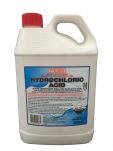
Hydrochloric Acid
With an initial measured pH range of 7.4 to 7.6, work on 10 lt per 50,000 lt pool to achieve a pH of no more than 6.0. More acid will be required if the initial pH level is higher than the above range.
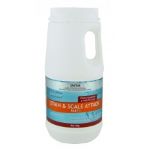
Stain & Scale Attack pt 1
Concentrated calcium scale remover
It can also be used as an effective copper stain remover.
Lo-Chlor Scale Attack works best at pH 7.0. Make sure the chlorine level is below 1.0 p.p.m. High chlorine levels will neutralise Scale Attack
The Lo-Chlor Scale Attack works very slowly. Advise the pool owner that it will take up to 6 weeks before results are sometimes seen.
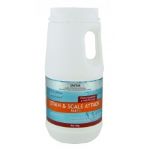
Stain & Scale Attack pt 2
Concentrated calcium scale remover
It can also be used as an effective copper stain remover.
Lo-Chlor Scale Attack works best at pH 7.0. Make sure the chlorine level is below 1.0 p.p.m. High chlorine levels will neutralise Scale Attack
The Lo-Chlor Scale Attack works very slowly. Advise the pool owner that it will take up to 6 weeks before results are sometimes seen.
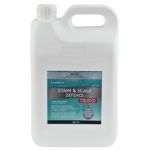
Stain & Scale Defence
A calcium scale inhibitor for the prevention of scale buildup on pool surfaces. An anionic, non-phosphate dispersant and scale inhibitor is employed to mitigate scale formation, prevent iron staining, counteract corrosion in pool heating equipment, address scum deposits, and prevent clogging of filters It also acts as a sequestrant, which will retain the removed calcium in the solution and allow it to be filtered out. It should be used in conjunction with stain & scale attacks.

Cal Stop
It’s important to control Calcium levels to ensure proper water quality and maintain the beauty of your
pool. High pool water calcium hardness levels, especially
above 400 PPM, can sometimes reduce the clarity of water
and cause scaling issues. Use Cal-Stop to inhibit the formation of calcium scale in salt and freshwater pools and maintain their great look. It also acts as a sequestrant, which will retain the removed calcium in the solution and allow it to be filtered out.
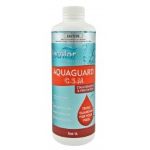
Aquagaurd C.S.M
Is a versatile and multi-function specialty product that can be used for a diverse range of solutions to enhance the quality of your pool surrounds, your pool equipment, and your pool water. Keeps scale at bay by both assisting in the removal of existing scale and inhibiting the buildup of scale from pool walls, equipment, and pipes. It also acts as a sequestrant, which will retain the removed calcium in the solution and allow it to be filtered out.
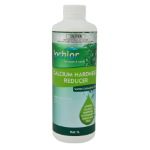
Calcium Hardness Reducer
Hydroxyethylidene Diphosphonic Acid Complex.
Reduces calcium levels to the ideal range of 200–400 ppm. It will restrain calcium scale formation on pool and spa surfaces as well as valuable equipment. It will restore water clarity on application.
What advantages does it have over other similar products? Lo-Chlor Calcium Hardness Reducer is a highly concentrated liquid formulation. It is compatible with all recognised sanitizers and other pool and spa additives It may be used in all types of pool and spa finishes.
It is easy to use It is economical to purchase. There is no residue, so there is no need to vacuum the pool, to waste. It also acts as a sequestrant, which will retain the removed calcium in the solution and allow it to be filtered out.
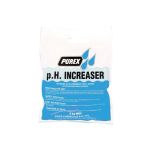
p.H. Increaser
It acts as a sequestrant, which will retain the removed calcium in solution and allow it to be filtered out.
However, it’s important to use soda ash correctly to avoid issues like cloudiness in the pool water. If you’re considering using soda ash for calcium sequestration, it’s advisable to determine the appropriate amount for the pool volume and method for your specific pool conditions.

Erase It® for Calcium by LO-CHLOR
Lo-Chlor Chemicals (in conjunction with StainEraser, Inc.) proudly introduces their new line of cleaning products.
Erase It® offers an alternative cleaning solution to other harsh chemicals.
Erase It® products are easy to use, safe, and produce instant results.


Erase It® for Concrete by LO-CHLOR
Lo-Chlor Chemicals (in conjunction with StainEraser, Inc.) proudly introduces their new line of cleaning products.
Erase It® offers an alternative cleaning solution to other harsh chemicals.
Erase It® products are easy to use, safe, and produce instant results.

Erase It® for Spas & Vinyl Pools LO-CHLOR
Lo-Chlor Chemicals (in conjunction with StainEraser, Inc.) proudly introduces their new line of cleaning products.
Erase It® offers an alternative cleaning solution to other harsh chemicals.
Erase It® products are easy to use, safe, and produce instant results.

